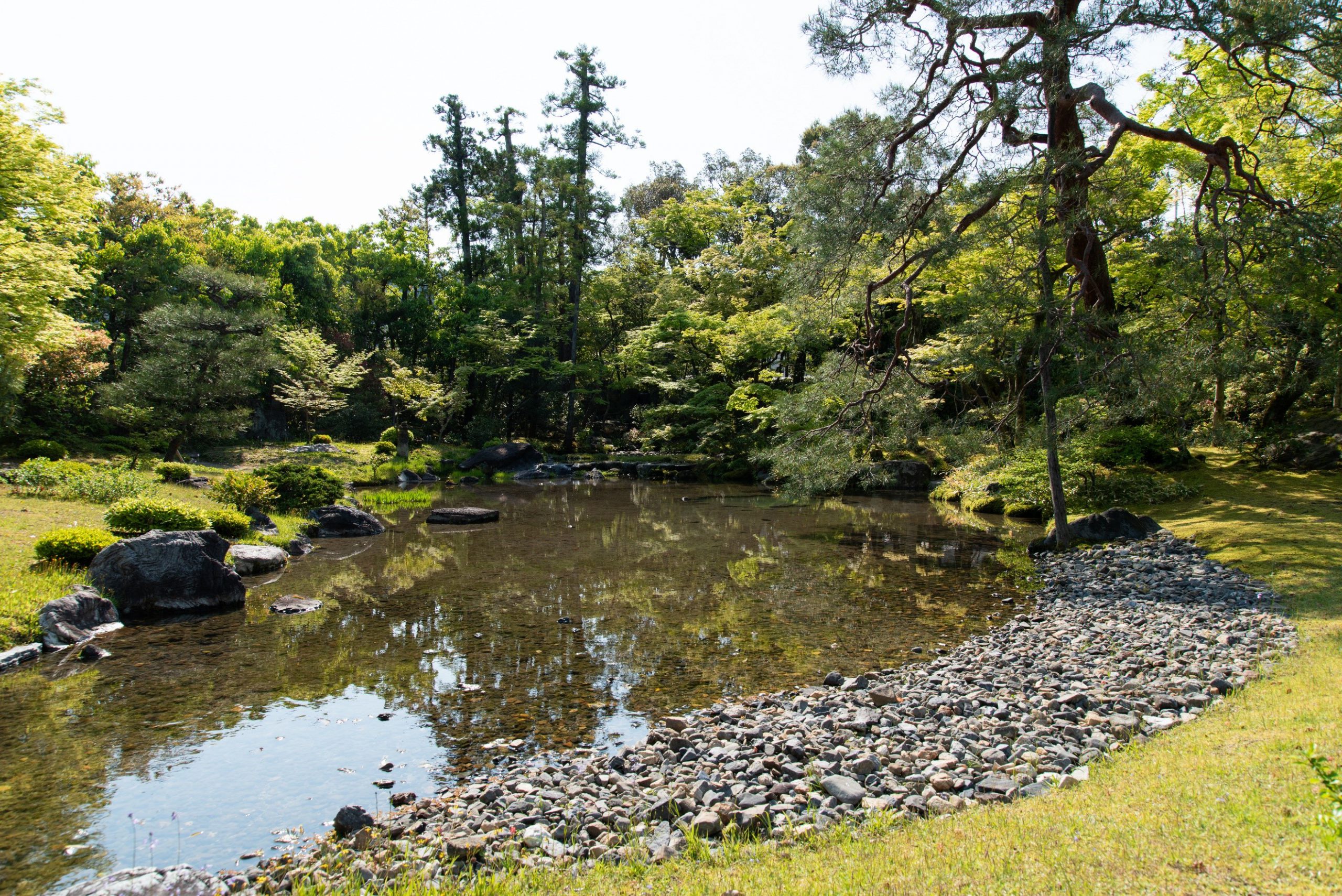Ueyakato Landscape has posted a new keywords article to its English website!
2022/02/17|News

Ueyakato Landscape has posted a new keywords article to its English website!
This time we're exploring the pebble beach (suhama).
In the seventh century, Japanese gardens were mostly conceptual affairs, ornamental square ponds with “island” centers that symbolically expressed the desire for immortality. Yet these angular gardens all but vanished in the eighth century after Japan founded a new capital at Nara. Instead, we see a startling turn toward soft sloping lines of pebbled beaches. With Kyoto’s establishment as the nation’s capital, pebble beach techniques flourished, but in the fourteenth century, the pebbles used to create these winding beachlines were replaced by three-dimensional stone designs. Pebble beaches were rehabilitated in the seventeenth century as playful yet graceful designs for guests to encounter on their way to a tea ceremony. Then, in the modern period’s natural landscape gardens, we discover pebble beach designs that seamlessly blend into scenery recreating familiar natural landscapes at their full scale. Perhaps the best explanation of the pebble beach's vital role in Japanese gardening history is the tremendous power it contains to express the scenery that their owners most long to make their own.
Read the full article here!
This time we're exploring the pebble beach (suhama).
In the seventh century, Japanese gardens were mostly conceptual affairs, ornamental square ponds with “island” centers that symbolically expressed the desire for immortality. Yet these angular gardens all but vanished in the eighth century after Japan founded a new capital at Nara. Instead, we see a startling turn toward soft sloping lines of pebbled beaches. With Kyoto’s establishment as the nation’s capital, pebble beach techniques flourished, but in the fourteenth century, the pebbles used to create these winding beachlines were replaced by three-dimensional stone designs. Pebble beaches were rehabilitated in the seventeenth century as playful yet graceful designs for guests to encounter on their way to a tea ceremony. Then, in the modern period’s natural landscape gardens, we discover pebble beach designs that seamlessly blend into scenery recreating familiar natural landscapes at their full scale. Perhaps the best explanation of the pebble beach's vital role in Japanese gardening history is the tremendous power it contains to express the scenery that their owners most long to make their own.
Read the full article here!
